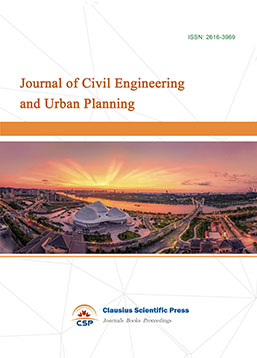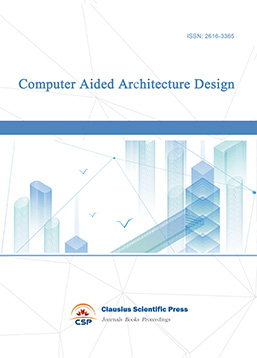The Infiltration Interface Structure of Suburban Landscape in Bimen Township, Anji, Zhejiang Province, China
DOI: 10.23977/lsuh.2021.030101 | Downloads: 14 | Views: 1864
Author(s)
Ke Wang 1, Zhu Wang 1
Affiliation(s)
1 Institute of Civil Engineering, Zhejiang University, Hangzhou, Zhejiang, China
Corresponding Author
Ke WangABSTRACT
Coordinating and promoting urban and rural-space development has been a new round of institutional change in the Province of Zhejiang since 2004. And this plan was fully implemented, which showed that the isolation between the urban and rural areas had gradually diminished. Meanwhile, an interaction that is dynamic, flexible and lasting is formed, and is embodied in change of landscape morphological structure in the surrounding villages. Bimen village locating at the intersect area of Anji Township, Huzhou and Yuhang District was the case. Recognized as ‘Bamboo village’ with flourishing bamboo industry, Bimen has witnessed the blooming process of interaction with urban areas in ecology, economy, technology and culture. However, there were challenges of agriculture and manufacture recession and population loss as well. This study focused on Bimen village’s adaptation to the resource exchange with cities, and put forward the infiltration model simulating the transformative process based on theory of landscape ecology and infiltration mechanism. By introducing the infiltration model, industrial upgrading and several patterns were proposed in the reformation design, such as adjusting the industrial structure, upgrading the local special bamboo crafting traditions, releasing space for activities, and establishing infrastructures on the interface. The new agriculture mode will strengthen the interface by orienting the Third Party Platform (i.e. Internet oriented platform) upon the old dynamic basis and will bring new vitality for economy development in Bimen village.
KEYWORDS
Bimen Village, Infiltration Interface, Flexibility, Rural LandscapeCITE THIS PAPER
Ke Wang, Zhu Wang. The Infiltration Interface Structure of Suburban Landscape in Bimen Township, Anji, Zhejiang Province, China. Landscape and Urban Horticulture (2021) 3: 1-14. DOI: http://dx.doi.org/10.23977/lsuh.2021.030101.
REFERENCES
[1] Wang, Z., Wang, T. (2014) Main body cognition and regional expression of rural settlements. Journal of western residential environment, (3), 8 -13. (in Chinese)
[2] Smith, N.R. (2014). Beyond top-down/bottom-up: Village transformation on China’s urban edge. In Cities, 41, 209-220.
[3] Rosenberg, L. (2013) Urbanizing the Rural: Local strategies for creating "new style" rural communities in China. China Perspectives, 3 (95), 63-71.
[4] Wu, J.G. (2007). Landscape ecology: landscape, process, scale and grade. Beijing: Higher Education Press, 112. (in Chinese)
[5] Wen, D. (2008) China's Rural Reform: Crisis and Ongoing Debate. Economic and Political Weekly, 43(52), 86-96.
[6] Chen. X.W. (2017) Research on the Integration Pattern of Industry and Space in Suburban Village of North Zhejiang, Zhejiang University, 57. (in Chinese)
[7] Yang, M.Y., Hens, L., Ou, X.K., De Wulf, R., (2009) Tourism: An Alternative to Development: Reconsidering Farming, Tourism, and Conservation Incentives in Northwest Yunnan. Mountain Research and Development, 29(1), 75-81. (in Chinese)
[8] Qian, Q. (2015). A Romantic Pastoral Garden on the Design of the Exemplary Yangshan Rural Life Complex in Wuxi. Architectural Journal, 1, 73. (in Chinese)
[9] Xu, T. (2010) The End of the Urban-Rural Divide? Emerging Quasi-Commons in Rural China. ARSP: Archiv Für Rechts- Und Sozialphilosophie / Archives for Philosophy of Law and Social Philosophy, 96(4), 557-573.
[10] Wu, L.Y. (2006) Coping with urbanization in China: The role of the sciences of human settlements and planning practice. Ekistics, 73(436/441), 196-206.
| Downloads: | 502 |
|---|---|
| Visits: | 38665 |
Sponsors, Associates, and Links
-
Journal of Sustainable Development and Green Buildings

-
Bridge and Structural Engineering

-
Soil Mechanics and Geotechnical Engineering

-
Journal of Civil Engineering and Urban Planning

-
Journal of Municipal Engineering

-
Heating, Ventilation and Air Conditioning

-
Indoor Air Quality and Climate

-
Computer Aided Architecture Design


 Download as PDF
Download as PDF